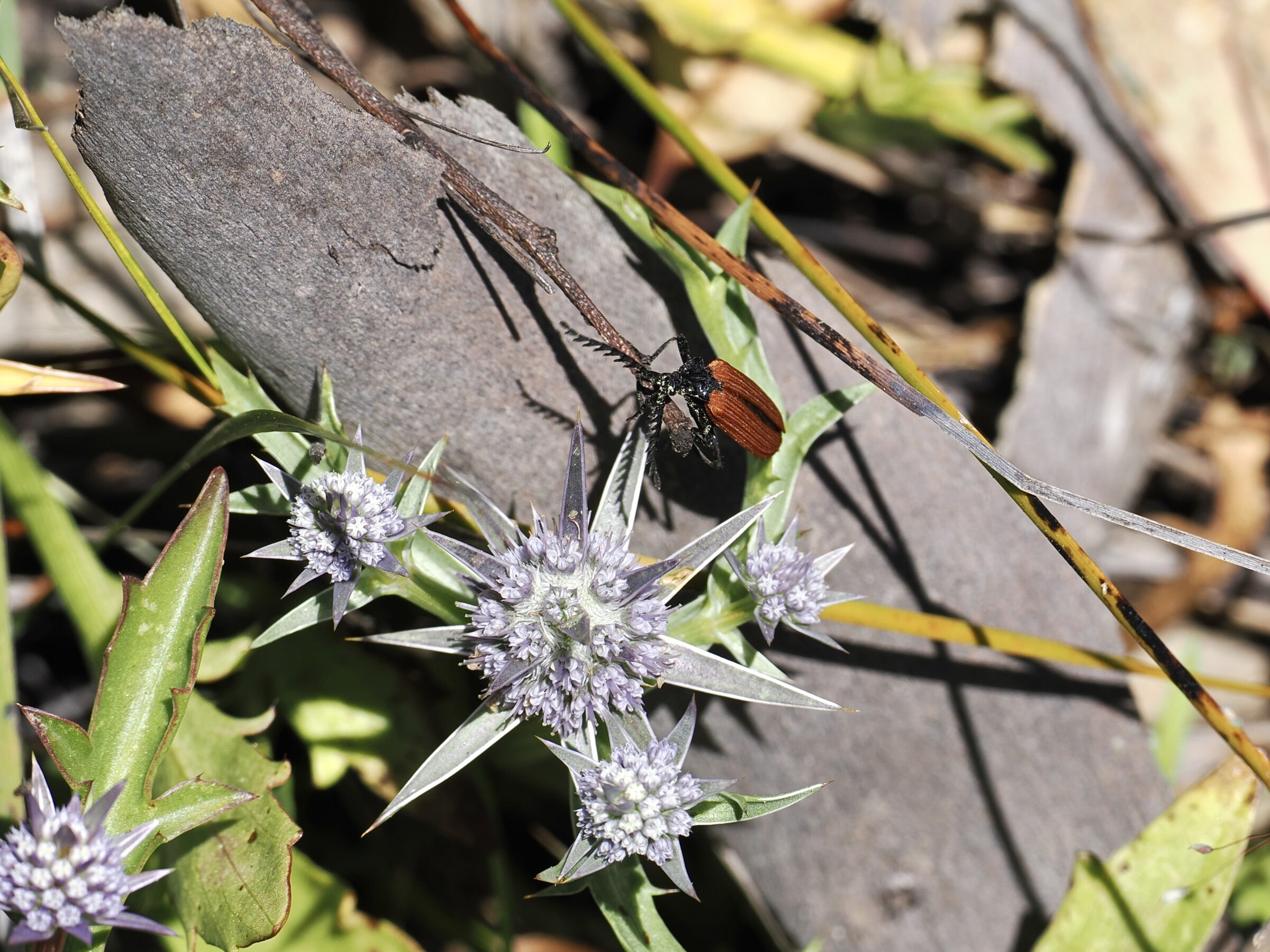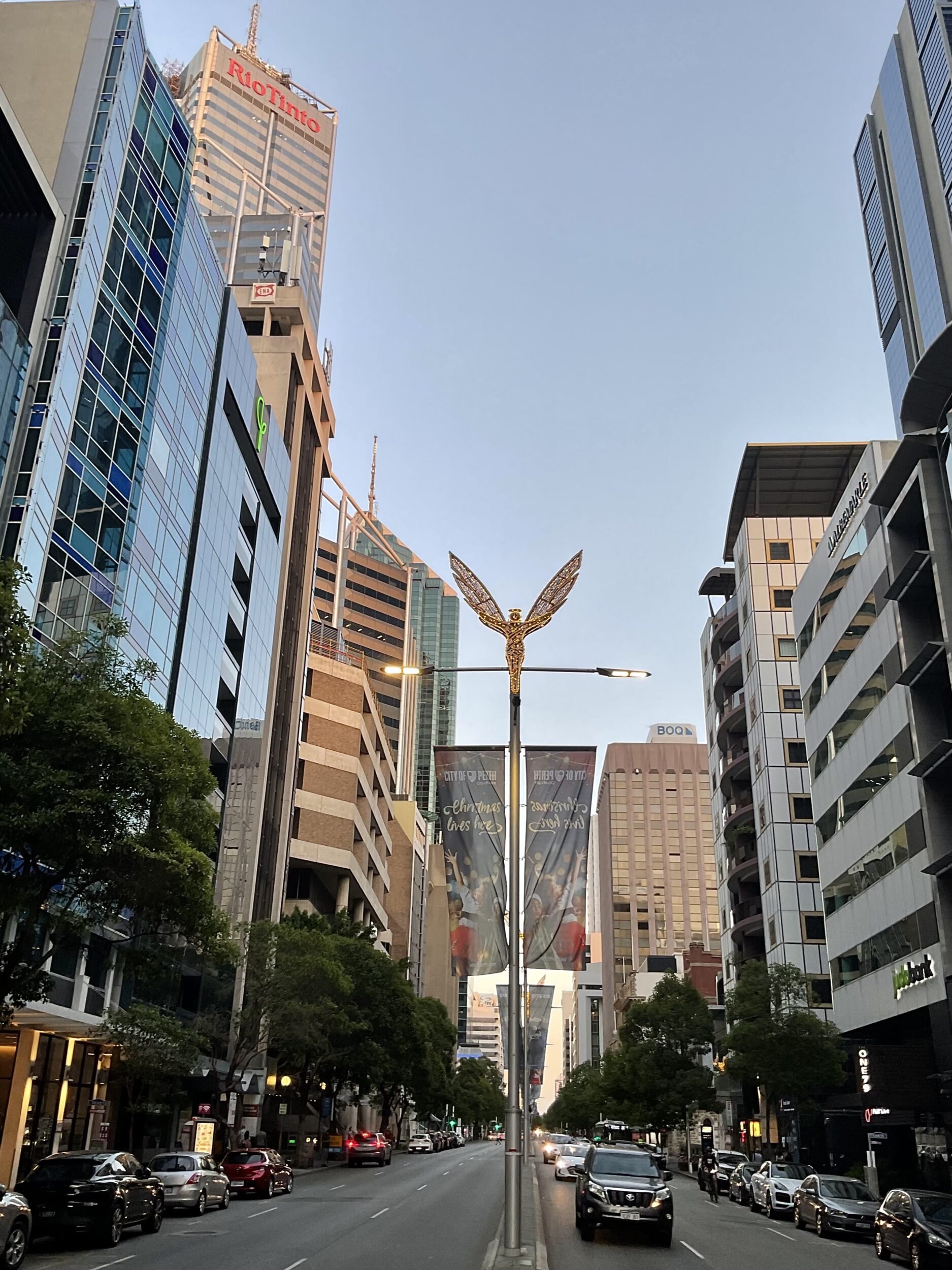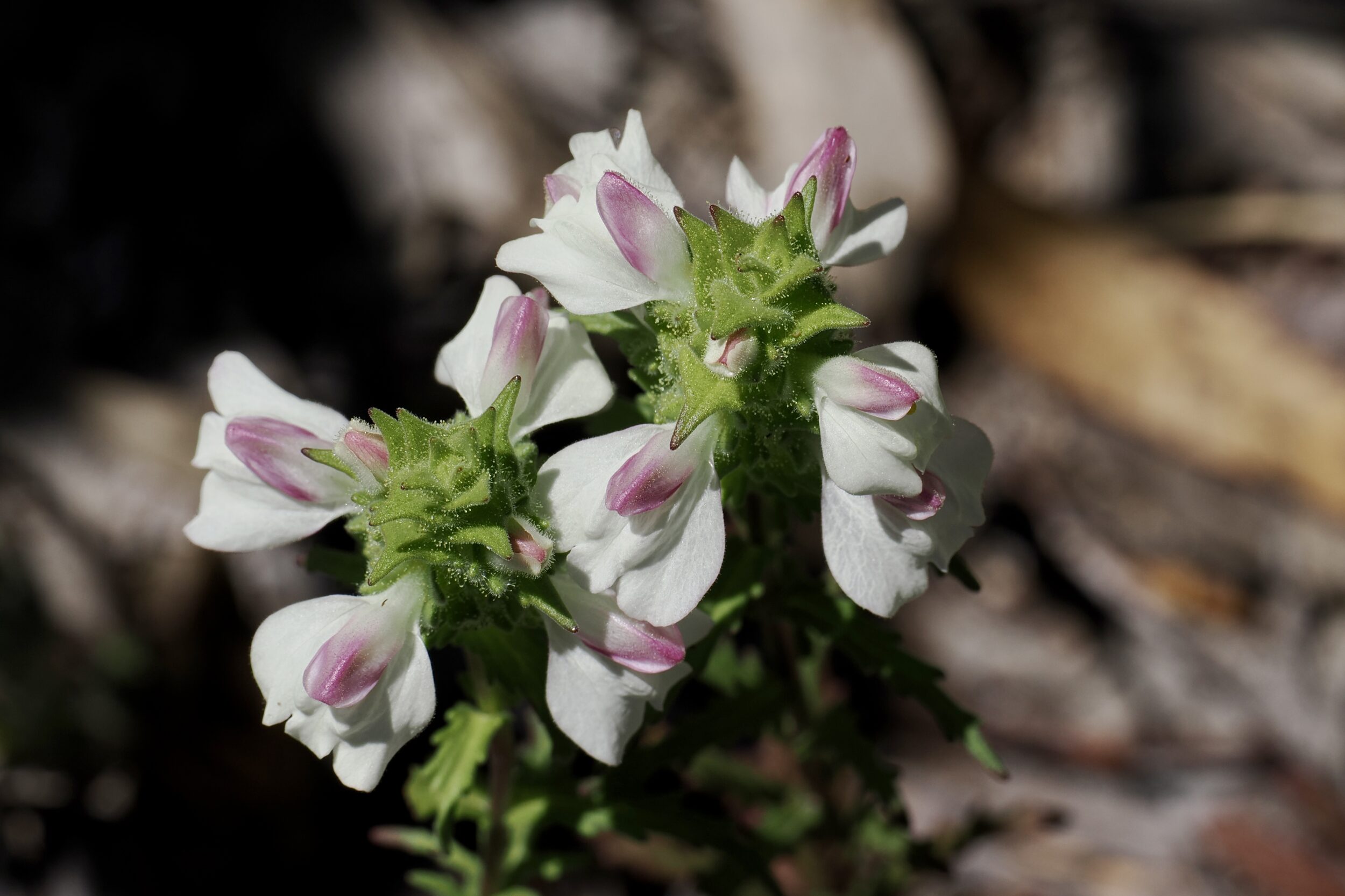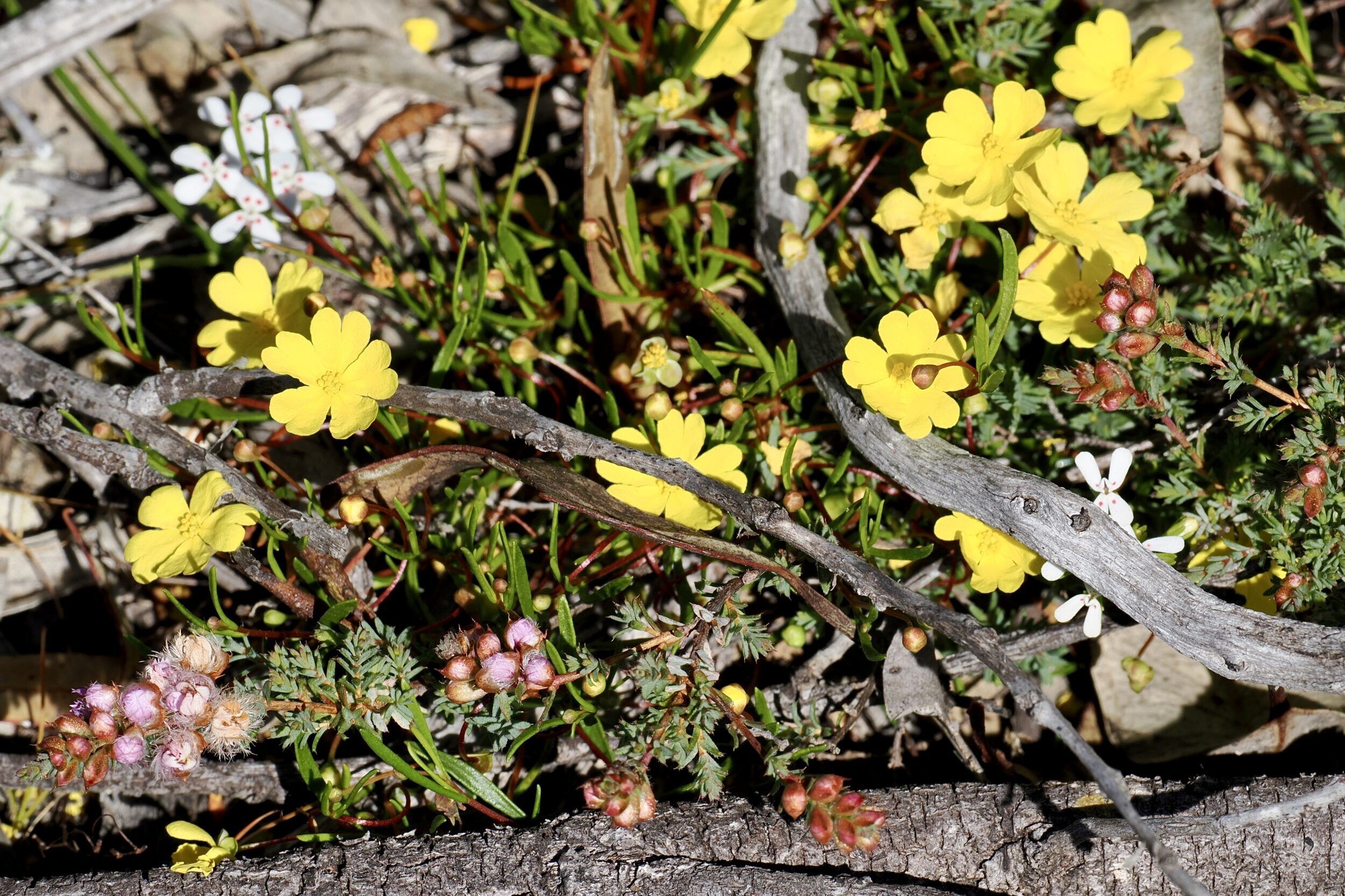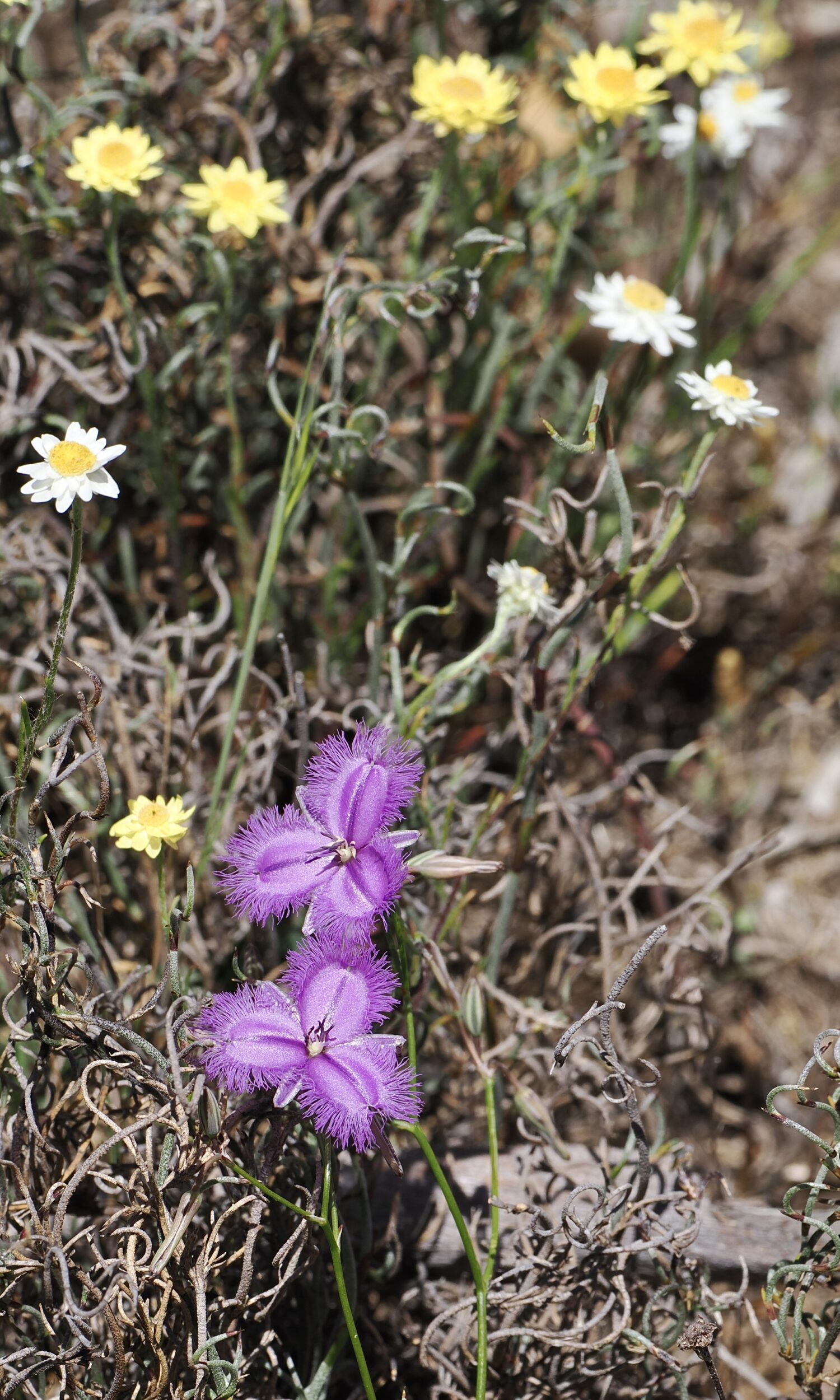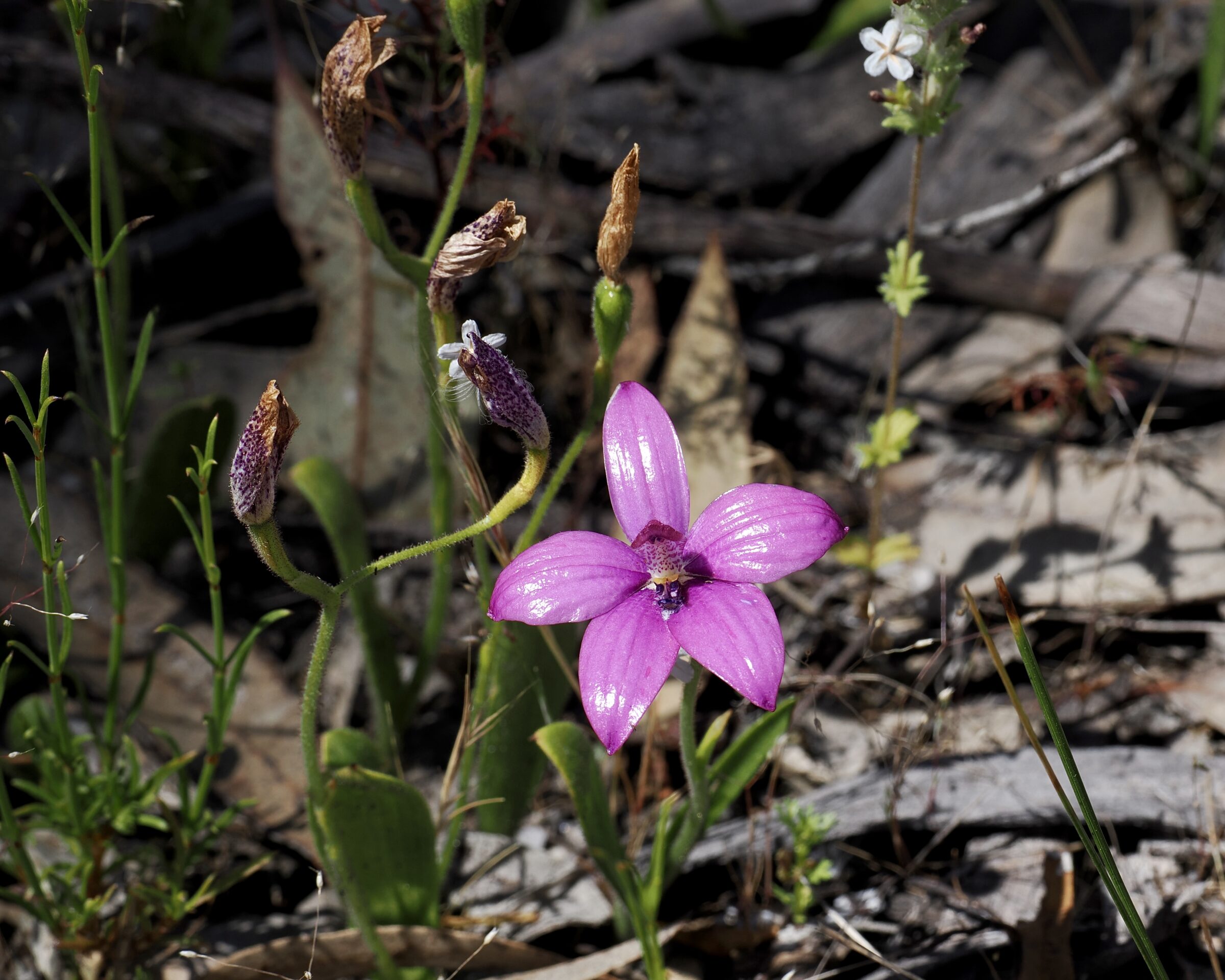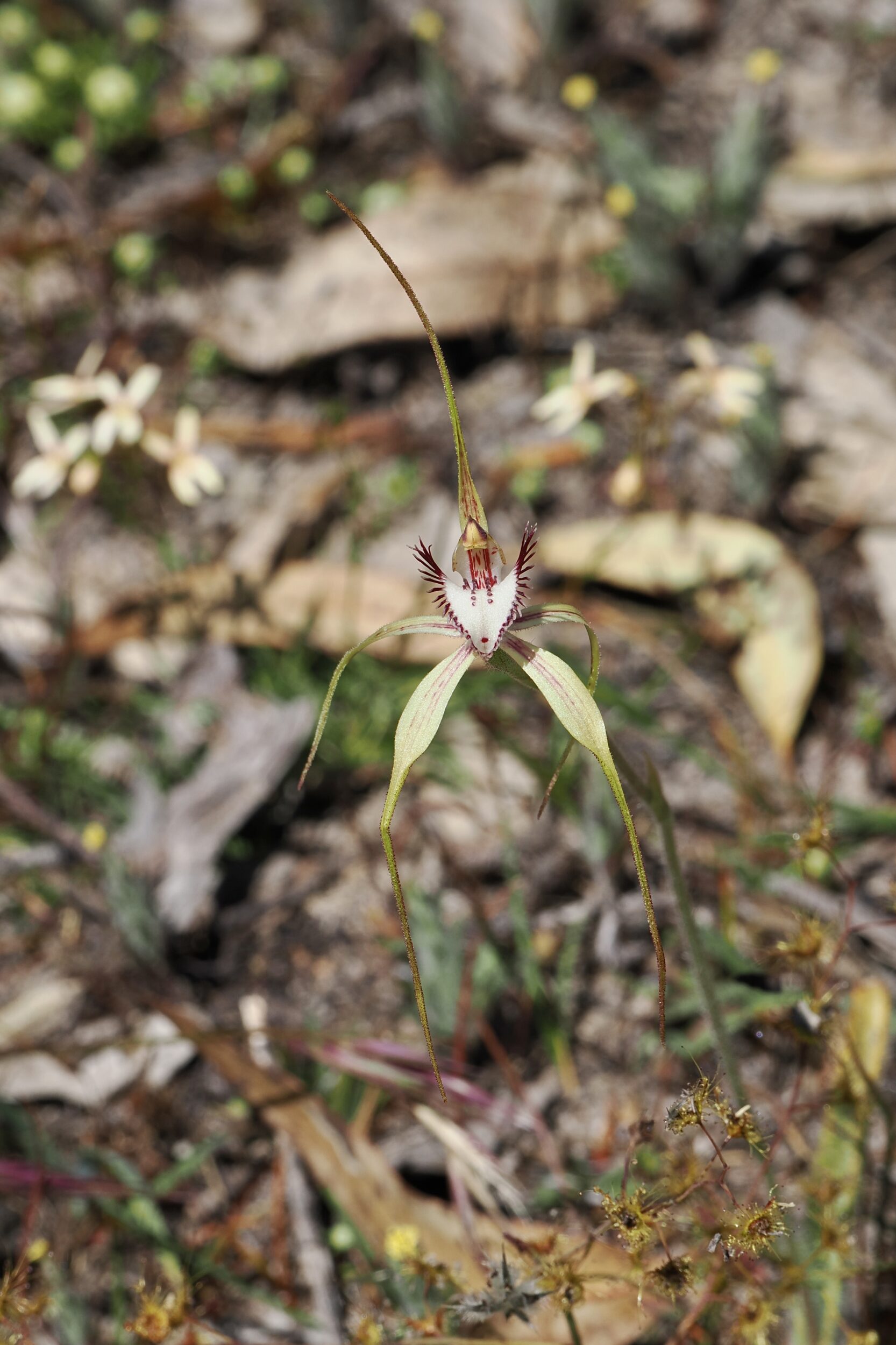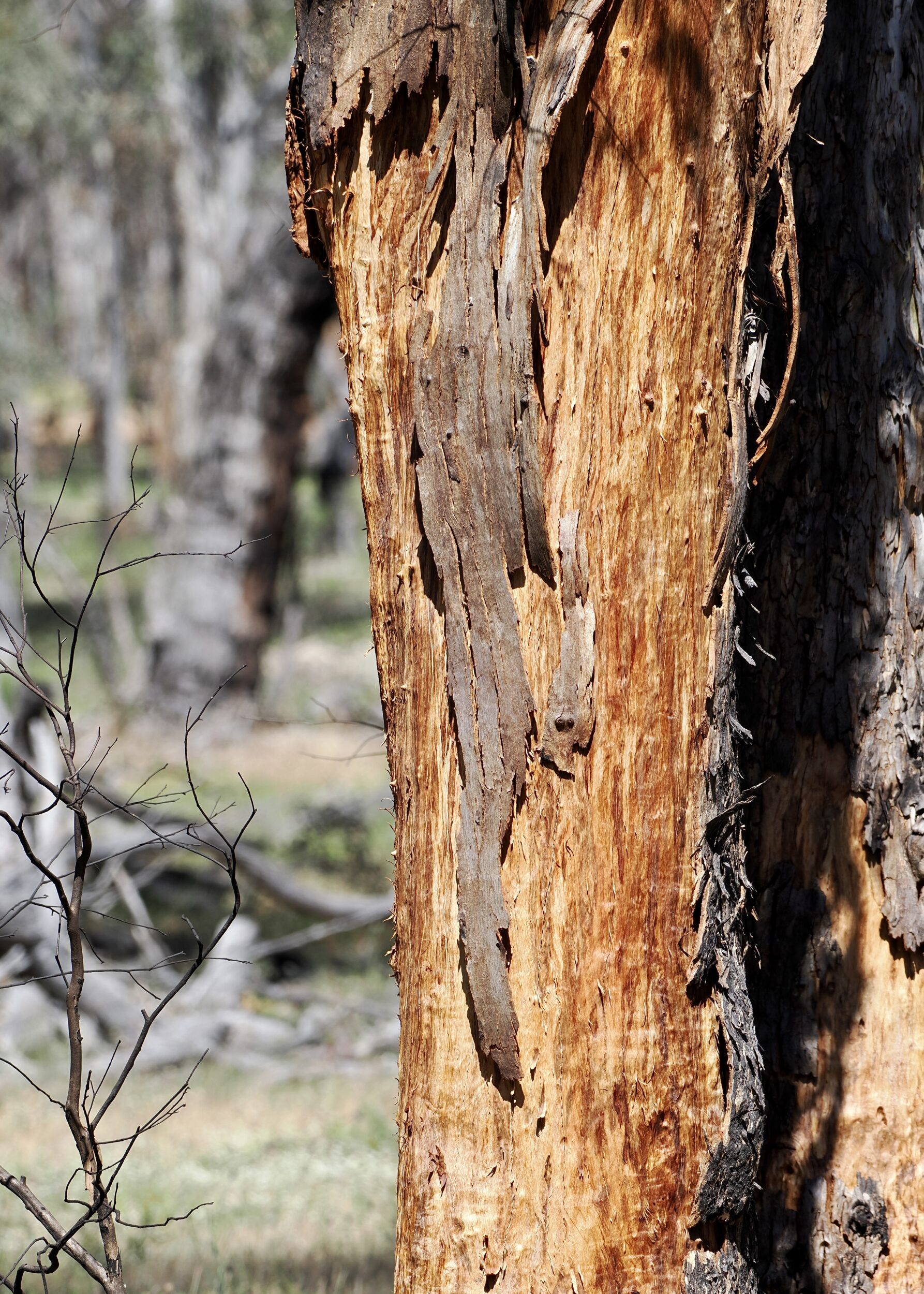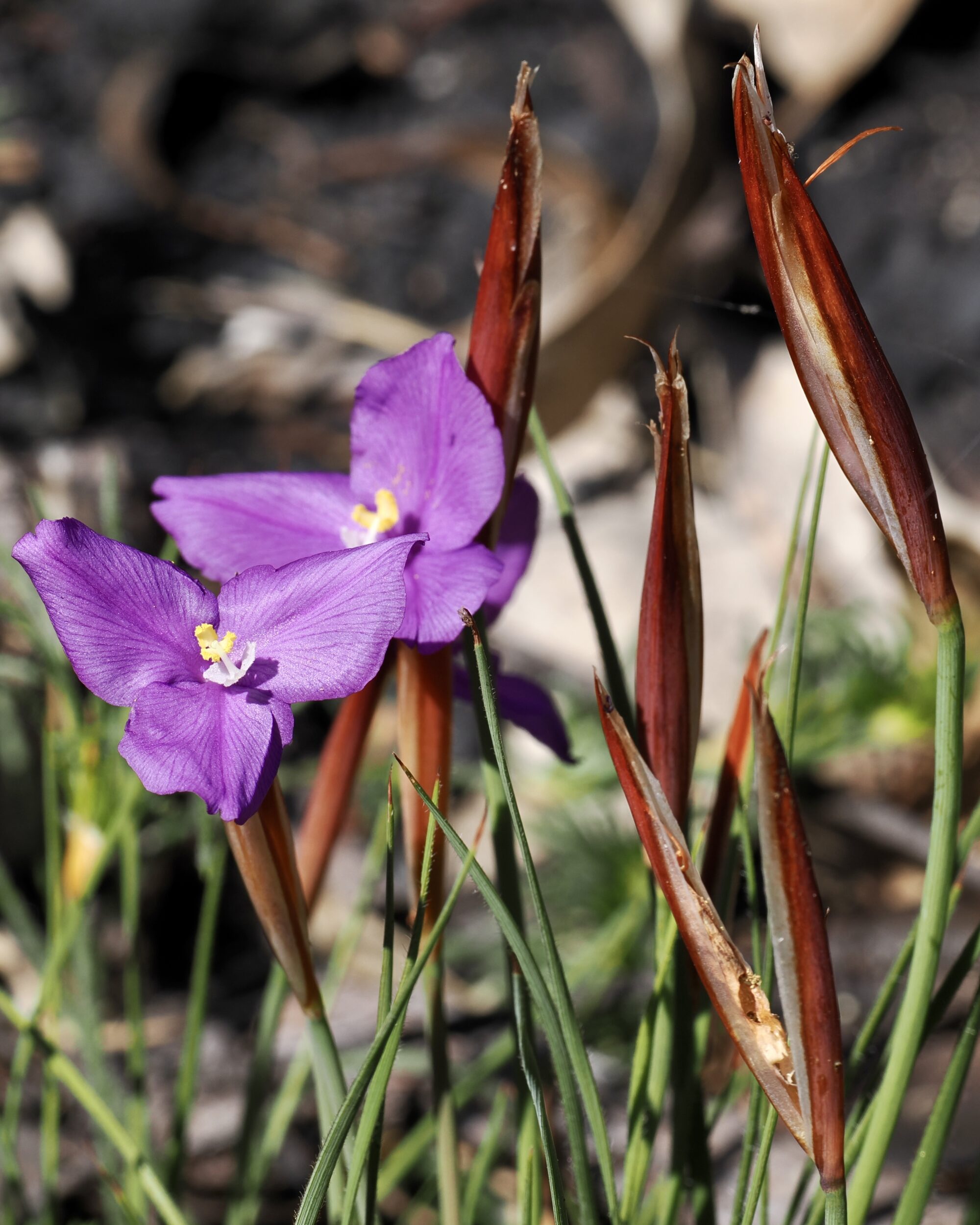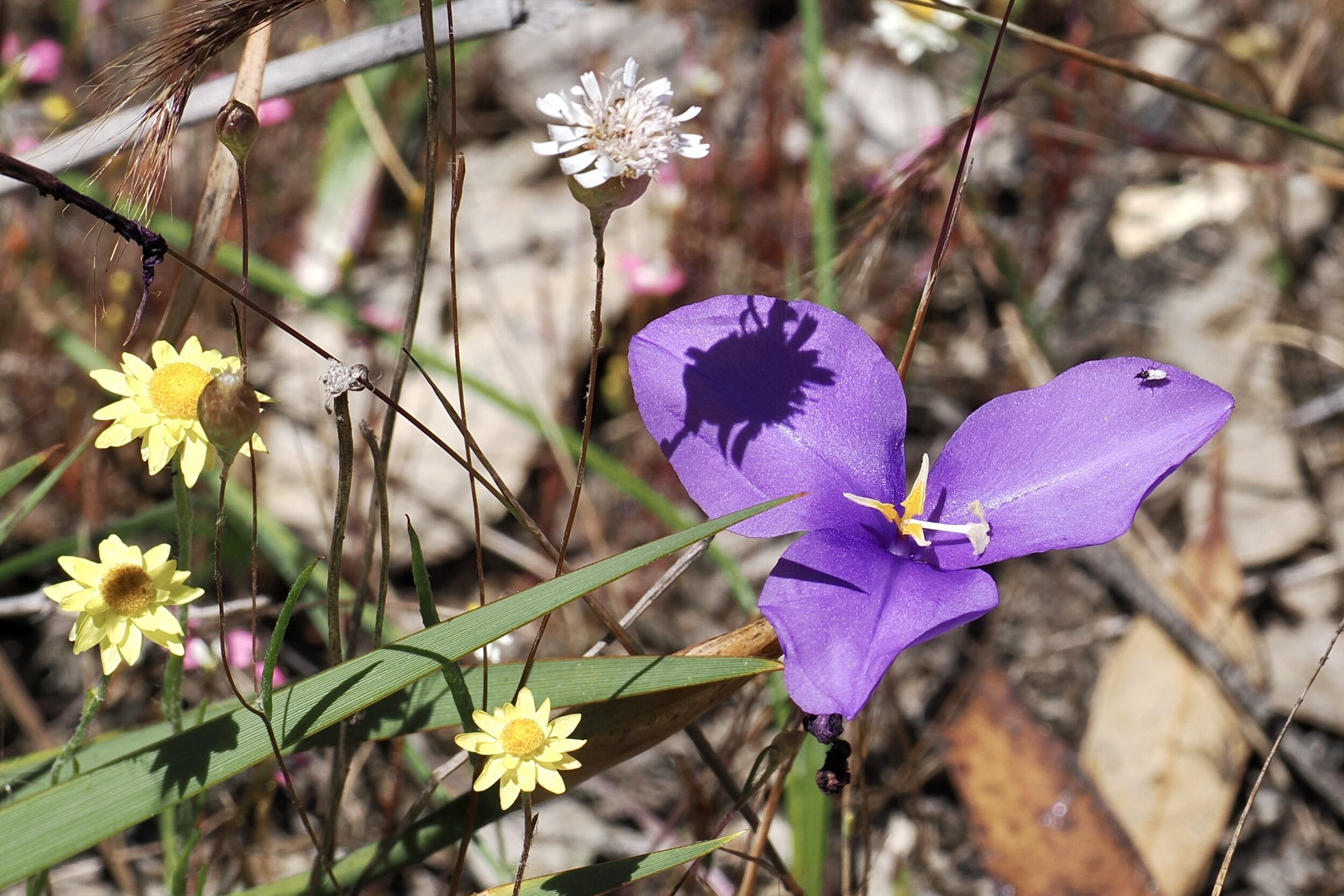This post’s photos were all taken on 30 October 2023, when the sun was high in an unclouded West Australian sky.
Each picture looks more-or-less straight down at the harshly-lit ground in so-called “northern Jarrah forest”, circa 60 kilometres southeast of Perth.
Much of this forest/woodland (this bit included) is in reality definitely-not-virgin, mixed forest/woodland, typically co-dominated by jarrah and marri trees, or by wandoo.
Even within a small, walkable area – as is the case here – the apparent “richness” or “poverty” of the forest floor is hugely variable, depending on precisely where one is standing and on what is going on at the particular time, within any particular year.
”Exactly the same place” can appear “utterly unlike itself”, from one time to another.
